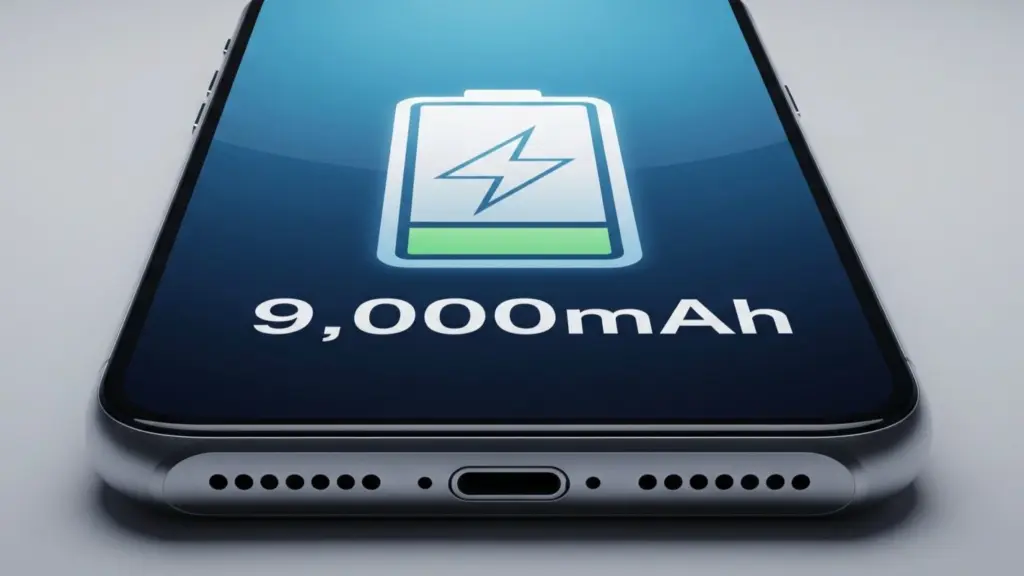In a groundbreaking development for smartphone technology, the year 2026 is poised to witness the introduction of single-cell batteries with an impressive capacity of 9,000mAh. Despite this significant increase in power, these advanced batteries promise to maintain a sleek profile, avoiding the bulkiness that has traditionally accompanied larger battery capacities.
The announcement comes as silicon-carbon battery technology continues to evolve, marking a pivotal shift in how energy is stored in mobile devices. While industry giants like Samsung, Apple, and Google have yet to adopt this technology, numerous Chinese smartphone manufacturers have already embraced it, integrating it into their latest models.
Silicon-Carbon Batteries: A New Era of Energy Efficiency
Silicon-carbon batteries represent a significant advancement over traditional lithium-ion batteries. By incorporating silicon, these batteries can store more energy without increasing their physical size. Currently, these batteries contain approximately 10% silicon, enabling companies like OPPO, Xiaomi, OnePlus, and HONOR to offer smartphones with battery capacities exceeding 6,000mAh and even 7,000mAh without compromising on design.
According to a well-known industry insider, Digital Chat Station, further improvements are on the horizon. OPPO has reportedly been testing a battery with 15% silicon content, boasting an 8,000mAh capacity, over the past six months. This development suggests that even larger battery capacities are being explored, with some manufacturers experimenting with silicon content increased by up to 30%.
The Future of Smartphone Batteries: Higher Capacities, Same Size
Next-generation smartphones are expected to incorporate silicon-carbon batteries with up to 20% silicon content. This innovation would allow for even greater energy storage without increasing the physical size of the battery, a crucial factor for maintaining the sleek design of modern smartphones.
By next year, experts anticipate that single-cell battery capacities could reach 8,500mAh, with preliminary research already underway for the 9,000mAh milestone. However, ensuring the reliability of these batteries is a priority, and it may take 6 to 12 months of rigorous testing before they are ready for commercial use. Consumers can expect to see these advancements in the latter half of next year.
Exploring New Frontiers: Metal-Shell Batteries
The innovation in battery technology does not stop at silicon-carbon advancements. The industry is also exploring ‘metal-shell’ batteries, a novel type that offers superior volume efficiency. This technology could further enhance battery capacities within the same physical dimensions, providing an additional avenue for manufacturers to explore in their quest for longer-lasting power sources.
“The introduction of 9,000mAh batteries is a game-changer for the smartphone industry, offering unprecedented power without sacrificing design,” said a leading industry analyst.
The move represents a significant leap forward, as manufacturers strive to meet consumer demands for longer battery life while maintaining the sleek aesthetics that modern users expect. As these technologies continue to develop, the implications for the smartphone market are profound, potentially setting new standards for battery performance and efficiency.
Meanwhile, consumers and industry experts alike will be watching closely as these advancements unfold, eager to see how they will reshape the landscape of mobile technology. As testing and development continue, the promise of more powerful, efficient, and aesthetically pleasing smartphones grows ever closer to reality.
About The Author
 Why a VPN is Essential for Secure Travel in the Digital Age
Why a VPN is Essential for Secure Travel in the Digital Age Ironheart Finally Brings Mephisto to the MCU, Almost Didn’t Happen
Ironheart Finally Brings Mephisto to the MCU, Almost Didn’t Happen Gemini’s Potential RCS Support Could Revolutionize Messaging
Gemini’s Potential RCS Support Could Revolutionize Messaging Paramount Settles $16 Million Lawsuit with Trump Over “60 Minutes” Report
Paramount Settles $16 Million Lawsuit with Trump Over “60 Minutes” Report Early Prime Day Tool Deals: Save Big on DIY Essentials
Early Prime Day Tool Deals: Save Big on DIY Essentials